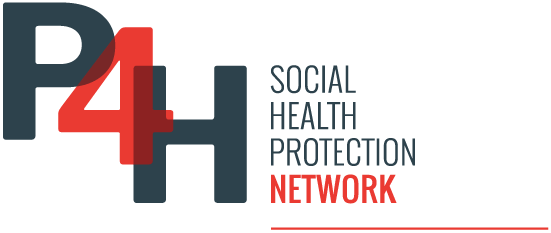Strengthening primary health care (PHC) is central to achieving universal health coverage in the WHO South-East Asia Region. This study, published in The Lancet Regional Health – Southeast Asia and Health Policy, analyses PHC financing arrangements in Bangladesh,...
Coverage and predictors of enrollment in the state-supported health insurance schemes in Nigeria: a quantitative multi-site study
This study evaluated the reach and factors influencing enrollment in state-supported health insurance schemes (SSHIS) across six Nigerian states, each representing a different geopolitical zone. Findings showed significant variation in coverage—highest in Kwara State...
The ethics of behaviour-based insurance models: Solidarity-based concerns in Germany’s statutory health insurance
Sickness funds are starting to use digital behavioral data to encourage physical activity among their members, but the ethical and societal implications, especially in solidarity-based insurance systems, are not well understood. While these programs may foster new...
Effect of community-based health insurance on the use of health service and perceived quality of care in Bacho Woreda, central Ethiopia: A mixed method study
Ethiopia's Community Based Health Insurance (CBHI) scheme significantly enhances outpatient care utilization, as evidenced by a study in Bacho Woreda. The research found that CBHI members were more likely to seek healthcare services, with 60% expressing satisfaction...
Navigating Nepal’s health financing system: A road to universal health coverage amid epidemiological and demographic transitions
Nepal is at a critical juncture in its journey toward universal health coverage (UHC), as it confronts the dual challenges of demographic shifts and a growing burden of non-communicable diseases (NCDs). These transitions are driving up out-of-pocket (OOP) healthcare...
Health effects of the Brazilian Conditional Cash Transfer programme over 20 years and projections to 2030: a retrospective analysis and modelling study
Conditional cash transfer (CCT) programmes have emerged as powerful tools in addressing poverty and promoting health equity, particularly in low- and middle-income countries. Brazil’s Bolsa Família Program (BFP), launched in 2004, stands as one of the world’s most...
Attitudes towards the dual health insurance system and inequalities in health care in Germany – results of a population survey
A survey of 2,201 adults in Germany found that while about 77% believe all insured individuals have equal access to necessary medical care, only around 20% think the quality of care is the same between statutory and private insurance holders. Nearly 80% support...
Global Health Watch 7: Mobilizing for health justice – Chapter D3, Financing Pandemic Recovery Prevention Preparedness and Response
A chapter in Global Health Watch 7, titled “Financing Pandemic Recovery, Prevention, Preparedness and Response”, critically examines current global health financing structures through the lens of pandemic cycles. Authored by the People’s Health Movement and Daraja...
Danish primary care: a focus on general practice in the Danish healthcare system
Denmark’s primary healthcare system, centered on general practice, operates within a decentralized structure supported by public funding. Recent reforms focus on shifting care from secondary to primary levels to improve accessibility and coordination. Key challenges...
Forgone Care of doctor’s visits in Germany – Results from three cross-sectional surveys
A study analyzing data from German representative surveys found that 21% of participants reported forgone care in the past year, with higher rates in women and younger adults. The main barriers to accessing care were categorized as systemic, psychological, and...
Economic burden and determinants among hospitalized patients with epilepsy in Thailand
This study analyzes the direct medical costs of hospitalized epilepsy patients in Thailand. These costs are assessed from both a societal perspective—which includes hospital expenditures and payments made by health insurance schemes—and a patient perspective, which...
Willingness to pay for a quality-adjusted life year (QALY) in Pakistan: implications for health policy
This study investigates the willingness to pay (WTP) for one additional Quality-Adjusted Life Year (QALY) among the general population in Pakistan, highlighting the economic constraints in healthcare resource allocation. A survey revealed a mean WTP of 114,006.4...
Implications of U.S. withdrawal from the World Health Organization on health financing in Africa
The U.S. withdrawal from the World Health Organization (WHO) could severely impact global health financing, especially in Africa, where its previous contributions supported vital health programs for HIV/AIDS, maternal and child health, tuberculosis, and malaria. This...
Towards attaining universal health coverage in Kazakhstan: Challenges and important next steps
Kazakhstan’s journey toward universal health coverage (UHC) has been shaped by its post-Soviet legacy of an underfunded, hospital-centric healthcare system and a range of structural challenges. In Towards attaining universal health coverage in Kazakhstan: Challenges...
Effectiveness of PFHI Schemes in India
A study in Economic & Political Weekly by Mamta Chaudhary, Prakash Babu Kodali, and T Sundararaman assesses publicly funded health insurance (PFHI) schemes in India using nationally representative data from the 2022–23 Household Consumption Expenditure Survey...
